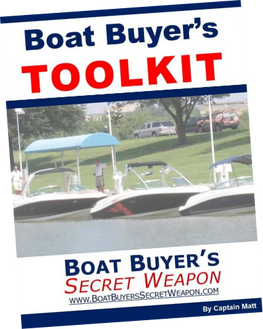|
Recommendations For Minimal Bilge Pump Sizing By Boat Length |
||||||||||||||||
|
Every boat needs a bilge pump of some sort on their boat. The question is,
how big of a bilge pump do you need for your boat?
The table above gives you that answer but that’s only part of the info you
need to make your choice as to which bilge pump is best for your boat.
First, its important to know that the GPH are a maximum amount based on a
fully charged battery with no vertical climb for the water and with hoses with
virtually zero fiction (for example a bilge hose that is corrugated).
Those factors can decrease your output by over 50% or more, so your
500GPH pump will actually only pump 250GPH when needed on your boat.
So, I’d suggest going on the larger size for your boat. It’s only a few bucks
more but could be lifesaving one day.
Next, you need to consider if you need an automatic on/off switch like a float
switch. The float switch will float when the water level in the bilge
compartment rises automatically turning on the pump.
Of course, the pump can also be turned on manually via a switch on the
helm.
Bilge pumps should also be hot wired directly to the battery so if the boat
starts taking on water, regardless if the battery switch is on or not, the
pumps will come on. If wiring your new bilge pump, be sure to follow all
manufacturer recommendations for wiring gauge and fuse size.
Click here to find the right bilge pump for your boat.
If you have any boat larger than a small runabout, you might have an
electric bilge pump somewhere aboard. That bilge pump is not intended to
keep your boat afloat in the event of a hull breach, but simply to remove
'nuisance' water — including, among other things, small amounts of spray
or rainwater that come in when the companionway is open, drips from the
stuffing box, or leakage or seepage from a deck fitting or port light that's not
quite watertight. Though those bilge pumps are not intended for hard duty,
the BoatUS Marine Insurance claim files show that in many cases, sinkings
have been delayed and even avoided because a bilge pump kept up with a
small leak and allowed time to fix it before it became a large leak.
Conversely, many sinkings involve a bilge pump that has been ignored for
weeks or months as it cycled increasingly frequently or one that has run the
battery flat in a relatively short period of time when the volume of water
entering the boat led to continuous running of the pump.
A standard electric, submersible centrifugal pump that can move 500 gallons
per hour (gph) sounds as if it should be able to handle nuisance water easily,
and even be capable of dealing with bigger problems. After all, 500 gph is
just over 8 gallons per minute (gpm). That's the equivalent of just over one-
and-a-half jerry cans of water every minute. But chances are, that pump is
not even moving half that volume. To get an estimate of your pump's real-
world pumping ability, figure out how much each of the following might be
reducing its rated capacity on your boat.
-20% Voltage Drop
Most manufacturers rate their bilge pumps while running off 13.6 volts of DC
power. But bilge pumps will only rarely see 13.6 volts in the wild. Batteries
will only deliver that kind of power while being charged through shore power
or with the engine running; they'll deliver considerably less when they're not
being actively charged. In addition, the voltage at the battery will not be
what reaches the bilge pump six or a dozen feet away in the bilge. Bilge
pump wires are sometimes undersized, and connections are often corroded
(it is the bilge, after all). All of this can decrease the voltage actually
reaching the pump by 20 percent or more, and can easily result in a 20-
percent drop in capacity. To maximize voltage to the pump, clean all
connections regularly, and check the wire-gage recommendations for your
pump size. If that wire's undersized, up-size. And if you decide to install a
higher-capacity pump after reading this article, make sure to put in a new,
larger wire.
Tip
Bigger isn't always better when it comes to fuses. Use the fuse size
recommended by the manufacturer; otherwise increasing resistance in the
wires or the pump may not trip the breaker, allowing heat to build up and
potentially start a fire.
-30% Head Height
Most manufacturers also rate their bilge pumps when pumping water
horizontally. But bilge pumps are located in the bilge — below the waterline.
Water is going to have to be pumped UP to reach the outlet, and it will have
to go even higher if the outlet hose includes an anti-siphon loop above the
waterline, as it should on most boats. Therefore, in the wild, all bilge pumps
have to lift the water some amount of vertical distance — called head —
from the bilge to the top of the anti-siphon loop or to the outlet. Head is
expensive in terms of pumping capacity. Three feet of head height, as might
be found on larger powerboats, decreases the capacity of that 500-gph
pump by about 30 percent. Six feet, as could be necessary on a large
sailboat, decreases capacity by more than 40 percent. Assuming the anti-
siphon loop is appropriate for your boat, there's no way around that loss of
capacity. If you want to move a lot more gallons per minute than you are
right now, you'll have to up-size the pump.
What Size Bilge Pump Do I Need On My Boat?
If you’d like to see how much your bilge pump actually pumps, pour 5
gallons of water in and time how long it takes to pump the water overboard.
Do the math and you have the real-world GPH number for your boat.
5 Gallons of Water DIVIDED BY X Seconds to Empty MULTIPLY BY 60 = GP
Minute MULTIPLY BY 60 = GALLONS PER HOUR
Now you know the real capacity of your bilge pump.
















